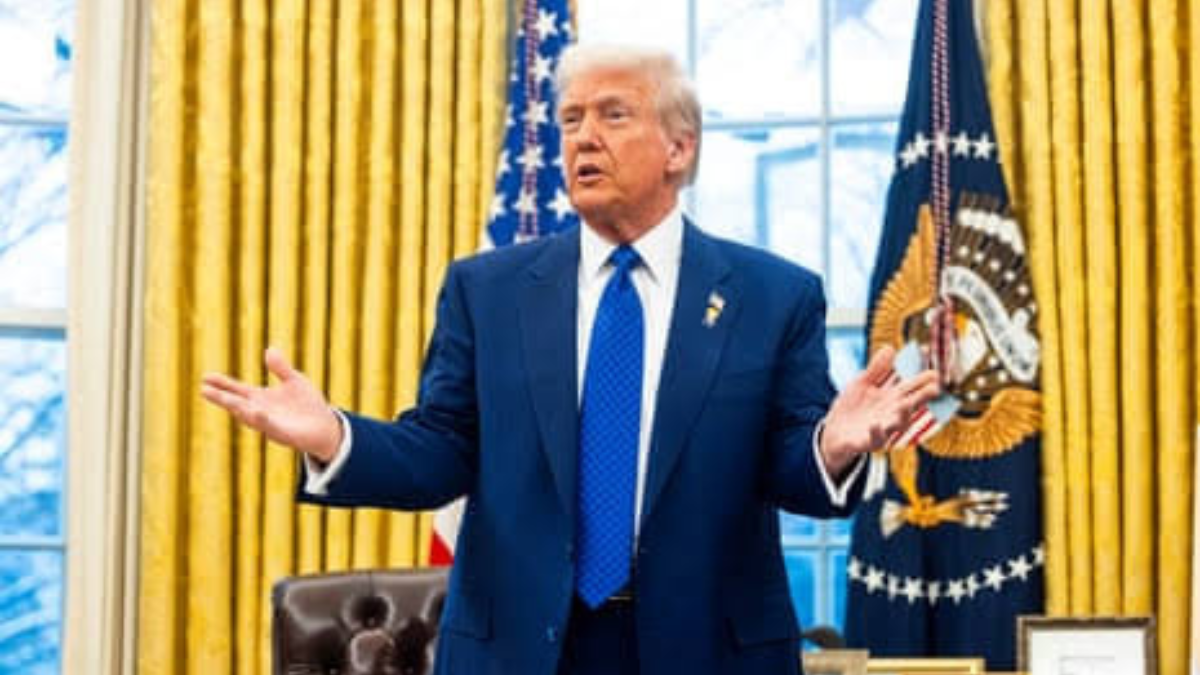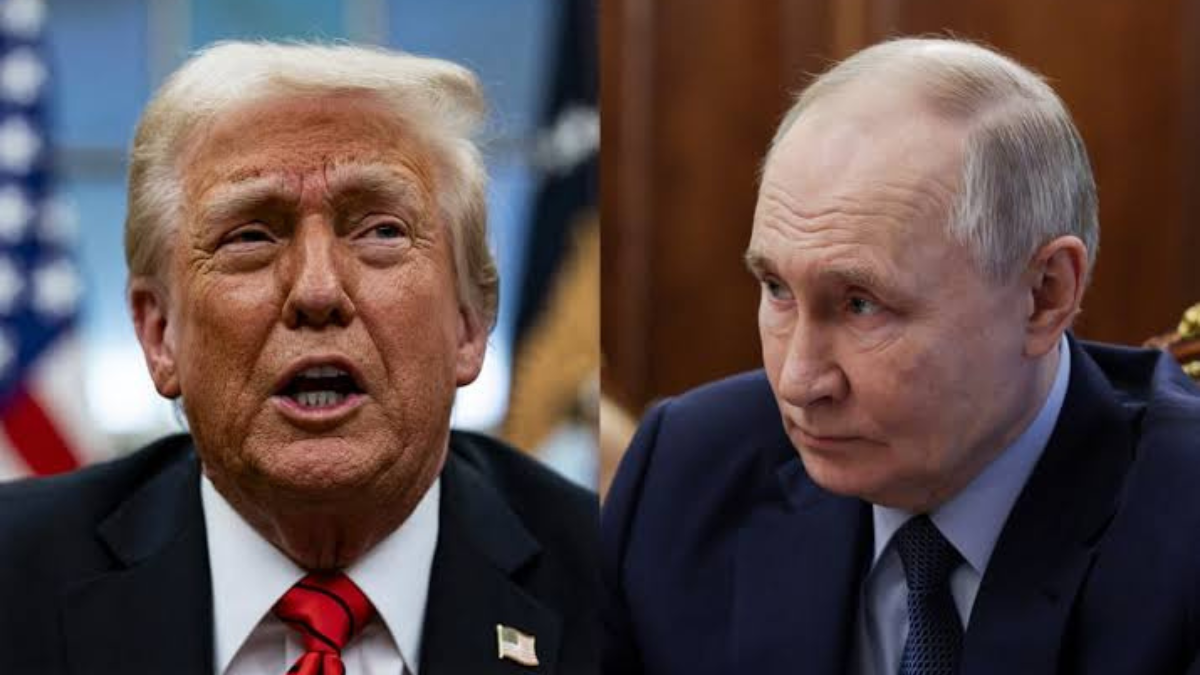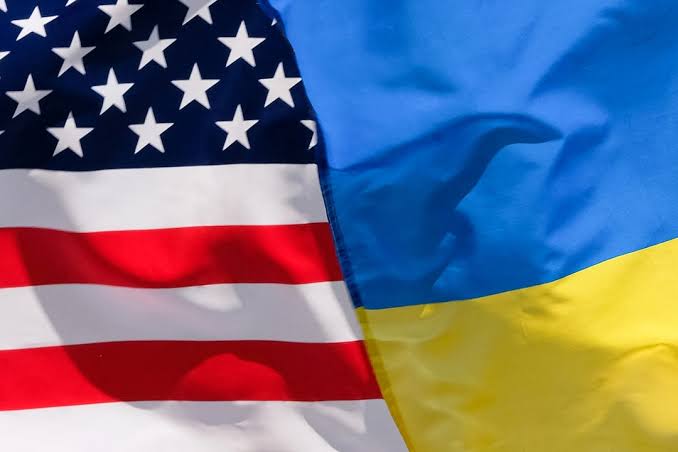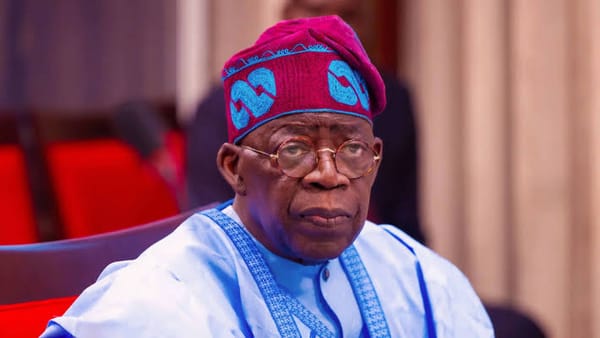Former President Donald Trump announced on Wednesday that he had engaged in discussions with Russian President Vladimir Putin regarding the resolution of the ongoing war in Ukraine, which commenced three years ago following the full-scale invasion by Russian forces.
Additionally, Trump had a conversation with Ukrainian President Volodymyr Zelenskyy subsequent to his dialogue with Putin.
These discussions took place as U.S. Defense Secretary Pete Hegseth provided a comprehensive overview of the administration's strategy concerning the conflict, which Trump had asserted during his campaign he could resolve on the very first day of his new term.
During a meeting of the Ukraine Defense Contact Group, Hegseth conveyed to foreign leaders and allies that achieving a return to Ukraine's pre-war borders is an "unrealistic objective" in the context of peace negotiations, as is the prospect of NATO membership for Ukraine.
"Chasing this illusionary goal will only prolong the war and cause more suffering," Hegseth said.
Zelenskyy has consistently advocated for the complete restoration of territorial integrity and earlier this week indicated a readiness to negotiate territorial exchanges with Russia, proposing to relinquish land in the Kursk region that Kyiv currently controls—a proposal that Russia firmly dismissed.

During a press briefing in the Oval Office on Wednesday afternoon, Trump reiterated some of Hegseth's remarks, expressing skepticism about Ukraine's ability to revert to its pre-2014 borders (prior to Russia's annexation of Crimea), although he suggested that "some of it would come back."
When questioned about his support for Zelenskyy potentially ceding or exchanging territory as part of a peace agreement, Trump remarked, "Well, he's going to have to do what he has to do, but, you know, his poll numbers aren't particularly great, to put it mildly."
Regarding whether he considered Ukraine an equal participant in the peace negotiations, Trump hesitated before answering: "It's an interesting question. I think they have to make peace. Their people are being killed, and I think they have to make peace."
He subsequently appeared to attribute some responsibility for the conflict to Ukraine, despite the evident aggression from Russia. "I said that was not a good war to go into. And I think they have to make peace," he added.

Hegseth dismissed the possibility of NATO membership for Ukraine, emphasizing that the United States acknowledges the necessity for Ukraine to obtain "robust security guarantees." He suggested the deployment of a non-NATO mission comprising both European and non-European peacekeepers to Ukraine, explicitly stating that there would be no American military presence on the ground.
Trump characterized his discussion with Putin, which the Kremlin reported lasted for an hour and a half, as "highly productive."
Regarding Ukraine, Trump noted that he and Putin "agreed to work together, very closely, including visiting each other's nations," and "to have our respective teams start negotiations immediately."
"President Putin even used my very strong Campaign motto of, 'COMMON SENSE.' We both believe very strongly in it," Trump remaried.
Kremlin spokesman Dmitry Peskov indicated that Trump "spoke in favor of an early end to hostilities and a peaceful solution to the problem. President Putin, for his part, mentioned the need to eliminate the root causes of the conflict and agreed with Trump that a long-term settlement can be achieved through peaceful negotiations."
Trump contacted Zelenskyy following his conversation with Putin, and their discussion lasted approximately one hour,
"He, like President Putin, wants to make PEACE," Trump posted afterward. "We discussed a variety of topics having to do with the War, but mostly, the meeting that is being set up on Friday in Munich, where Vice President JD Vance and Secretary of State Marco Rubio will lead the Delegation."
During the briefing on Wednesday, White House Press Secretary Karoline Leavitt was inquired whether Trump anticipated that Ukraine would relinquish all disputed territory to Russia.
"Again, these negotiations are ongoing," she said. "I will allow the president to divulge any red lines that he may set."
When questioned about whether Hegseth's remarks compromised Ukraine's sovereignty in negotiations, Trump responded, "No, I haven't done that. I am supporting Ukraine. I am supporting Ukraine."
These statements follow Trump's notable refusal during the ABC News presidential debate in September to express his belief in Ukraine's victory in the conflict against Russia.
"I want the war to stop," Trump had said.
Former Vice President Kamala Harris, who, similar to former President Joe Biden, committed to supporting Ukraine and characterized the conflict as a struggle for democracy and independence, expressed disagreement with his response.
"I believe the reason that Donald Trump says that this war would be over within 24 hours is because he would just give it up," she said during the debate. "And that's not who we are as Americans. Let's understand what happened here."







